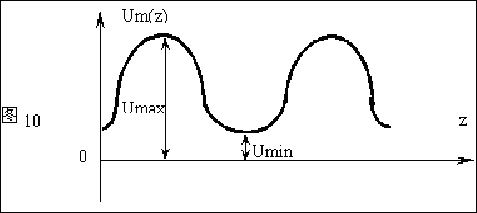Microwave circuit PCB design-standing wave and standing wave coefficient

1. Standing wave concept
When the PCB transmission line terminal load is short-circuited, ZL =0, making the incident wave and the reflected wave voltage equal in amplitude but opposite in phase (difference π), causing the terminal voltage waves to cancel each other completely and become zero. Figure 8 shows the distribution of incident wave and reflected wave when the load is short-circuited.

It can be seen from the figure that with time delay, the incident wave moves from left to right. After the terminal phase shifts, a reflected wave is formed and then moves from right to left. The two are added along the PCB transmission line to form another wave distribution form, which is the standing wave, as shown in Figure 9.
When a standing wave is formed on the PCB transmission line, the energy is no longer transmitted along the line, as if "stationed" on the PCB transmission line (corresponding to the state of the traveling wave). The standing wave expression of the cosine voltage wave can be deduced as:
u=Um(t) Sinβz where Um(t)=2Um Sinωt
It can be seen that the voltage is distributed along the PCB transmission line according to the law of simple harmonics, and its amplitude Um(t) changes with time, while the node (the point where the voltage or current is always zero) and the antinode (the point with the maximum value), the distribution law does not follow Time changes, thus forming periodic pulsating simple harmonics.

It can also be seen that the current standing wave has the same distribution law, except that the nodes (or anti-nodes) are misaligned by 1/4 wavelength, and the distance between both of them from the short circuit is an integer multiple of 1/4 wavelength.
2. Standing wave coefficient S (also known as voltage standing wave ratio)
In practice, the above-mentioned pure standing wave does not exist. Due to the loss of the PCB transmission line, the standing wave is always smaller than the traveling wave, that is, both occur at the same time. The actual unevenness (geometric size) of the PCB transmission line also causes partial reflection of energy to generate standing waves even in the case of a completely matched load. That is, the actual standing wave is an impure standing wave superimposed on a traveling wave.
The pure standing wave means that the incident wave amplitude A is equal to the reflected wave amplitude B, that is, the reflection coefficient Г=1 (note here is the modulus of Г complex number), and the impure standing wave means B The S parameter represents the ratio of the antinode voltage Umax of the standing wave of the PCB transmission line to the node voltage Umin, namely S=Umax/Umin Figure 10 shows the distribution of the voltage standing wave amplitude along the PCB transmission line in any case. It can be proved: Umax=A+B; Umin=A-B And can derive S=(1+Г)/(1-Г) In the formula, Г=A/B is the modulus of the reflection coefficient, then Г=(S-1)/(S+1). Since Г=0~1, the S parameter is a positive number equal to or greater than 1. It can be seen that when the load is completely matched, Г=0, S=1. It can be seen from the above that the standing wave coefficient, S, can fully characterize the working status of high-frequency signal (especially microwave signal) transmission. In microwave circuits, Usually S=1.05-3. When characterizing certain components with lumped parameter characteristics, S-parameters are sometimes referred to as dissipation or scattering coefficients. Regardless of dissipation or scattering, the direct cause is standing waves. Therefore, it is most appropriate to use the voltage standing wave ratio to characterize the S-parameters of components-because the voltage standing wave ratio can help understand the micro-concepts in some circuits and measure their characteristics in conjunction with the PCB transmission lines at the input and output ends. In summary, the PCB design principles for microwave circuits are as follows: . Standing wave is one of the root causes of the actual circuit instability or inconsistent with the design requirements. The design should fully ensure that the S parameter is as close to 1 as possible, that is, the smaller the S parameter, the better (usually S=1.05-3). .In practice, measuring standing wave coefficient is much simpler than measuring reflection coefficient. Therefore, only standing wave coefficients are generally used in measurement technology. . Excessively long ground wires or suspended wires (including various forms such as tiny burrs caused by PCB design or processing) can form strong standing waves, thereby causing radiation interference. . Excessive reflected waves will cause interference to the signal source (including the relative "source" of the signal processing link). . Standing waves interfere with normal signal transmission and reduce the signal-to-noise ratio. . The S parameter value depends on the reflection coefficient, that is, it depends on the characteristics of the PCB transmission line and the load terminal. Therefore, in PCB design, not only the structure of the trace characteristics, but also the matching design of the transmission terminal load of each signal trace should be fully considered. This is the basis to ensure the quality of the circuit. . Do not examine the S-parameters of components in isolation. They must be comprehensively measured in conjunction with their input and output signal transmission traces, that is, they should be examined in conjunction with the network of specific combinations of components. The above is the introduction of microwave circuit PCB design-standing wave and standing wave coefficient. Ipcb is also provided to PCB manufacturers and PCB manufacturing technology.